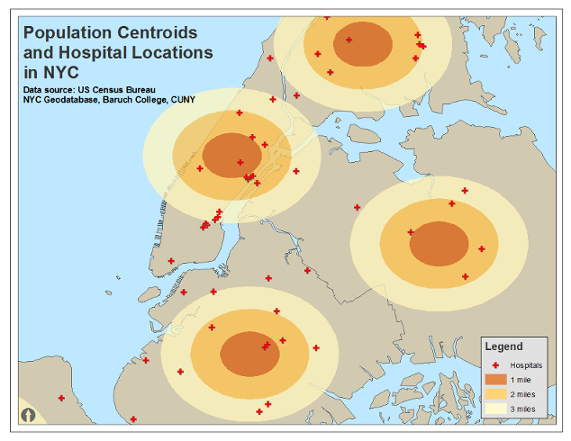Datasets on this page are licensed under a Creative Commons Attribution 4.0 International License.
The datasets on this page were produced by the GIS Lab at the Newman Library of Baruch College, CUNY using data from the US Census Bureau. The point layers were created in NAD83 (2010 and 2000) and NAD27 (historic) and are intended for use by researchers, policy makers, students, and educators for basic geographic analysis and mapping purposes. Population centroids represent the mean center of population in a given area, and are often used for calculating distances from a population's distribution to a given good or service.
US Census Population Centroids, 2010
| Name | Features | File Type | Download | Metadata |
|---|---|---|---|---|
| Centers of Population by Block Group | points | shapefile | popctr_blkgrp2010.zip | XML |
| Centers of Population by Census Tract | points | shapefile | popctr_tracts2010.zip | XML |
| Centers of Population by County | points | shapefile | popctr_county2010.zip | XML |
| Centers of Population by State | points | shapefile | popctr_state2010.zip | XML |
US Census Population Centroids, 2000
| Name | Features | File Type | Download | Metadata |
|---|---|---|---|---|
| Centers of Population by Block Group | points | shapefile | popctr_blkgrp2000.zip | XML |
| Centers of Population by Census Tract | points | shapefile | popctr_tracts2000.zip | XML |
| Centers of Population by County, US Territories | points | shapefile | popctr_county_territories2000.zip | XML |
| Centers of Population by County | points | shapefile | popctr_county2000.zip | XML |
| Centers of Population by State | points | shapefile | popctr_state2000.zip | XML |
Historic US Census Population Centroids
| Name | Features | File Type | Download | Metadata |
|---|---|---|---|---|
| Centers of Population by State, 1950 | points | shapefile | popctr_state1950.zip | XML |
| Centers of Population by State, 1960 | points | shapefile | popctr_state1960.zip | XML |
| Centers of Population by State, 1970 | points | shapefile | popctr_state1970.zip | XML |
Disclaimer: Every effort was made to insure that the data, which was compiled from public sources, was processed accurately. The creator, Baruch College, and CUNY disclaim any liability for errors, inaccuracies, or omissions that may be contained therein or for any damages that may arise from the foregoing. Users should independently verify the accuracy of the data for their purposes.


